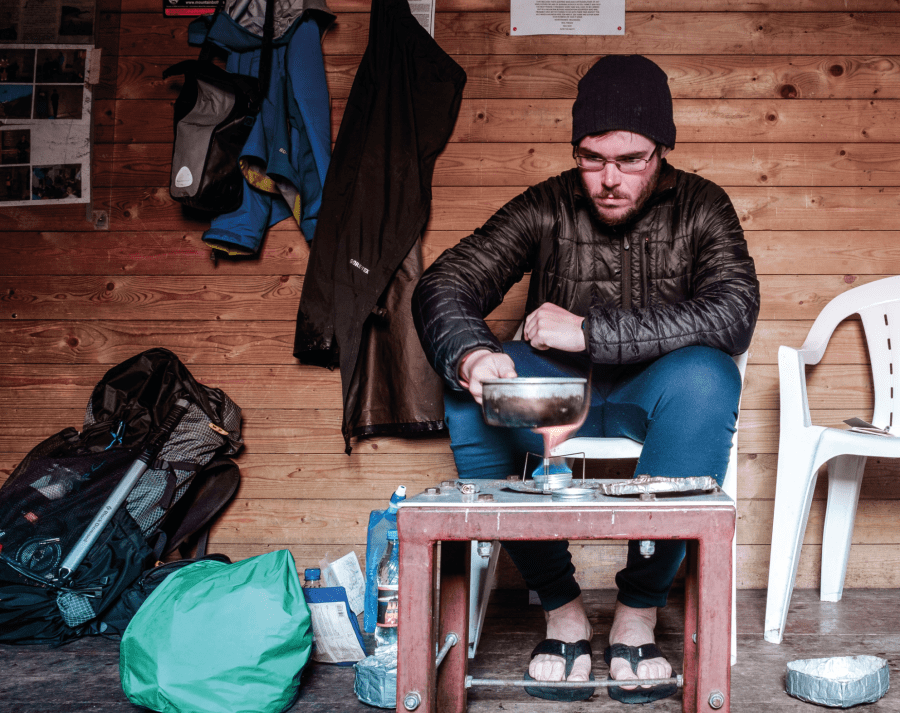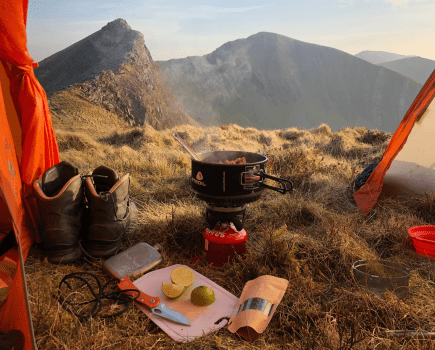Cooking when wild camping or backpacking is an essential skill to keep yourself properly fuelled – but there are a few different ways to approach it. Alex Roddie takes us through the gear, techniques and know-how you need.
Hillwalking and backpacking are hungry work. You’ll consume far more calories carrying a heavy pack up big hills all day – potentially several thousand more than you would in daily life. On your first few multi-day trips it’s all too easy to underestimate food’s relative importance to your happiness and comfort. It’s also easy to either underestimate or overestimate the amount of food you might need. If in doubt, it’s better to pack a few too many snacks rather than too little. Food and cooking gear are heavy, and it can be tempting to skimp, especially if the rest of your gear could be lighter. But as always it’s about finding the right balance for you – and there are several different ways you can approach cooking in camp. This is supposed to be fun, remember!
Words: Alex Roddie | Main image: Using an alcohol stove in a bothy. Credit: Alex Roddie
Equipment for cooking in camp
Stove
Most backpackers will carry a camping stove. Backpacking stoves are lightweight, compact, fuel efficient, and tend to focus on boiling water quickly.
“Stoveless” is a valid technique for ultralight backpacking. This means only carrying food that you can eat cold, either without preparation or by soaking in cold water. Loads of people do this for overnighters (a Cornish pasty and pack of custard creams will take you far) but for longer trips it’s best considered only by those who really know that it works for them. It can get monotonous – and the weight saving is negligible.
Pan and mug
Look for a compact, lightweight saucepan. It should have a fitted lid with holes to vent steam and an integrated lid handle. I recommend integrated fold-out pot handles too. About 7–800ml is best for solo use – big enough to boil water for a dehydrated dinner or cook a simple pasta/rice meal. Aluminium pans are cheaper but less durable. A quality titanium pan will last for decades.
A mug for tea and coffee should be simple and lightweight. A titanium cup is a good option, or a collapsible silicone one (these take up less space).
Utensils
A long-handled spoon is all you really need – a long handle is great when eating from a meal pouch. The penknife or multitool you are already carrying can double up for any food preparation. For more advanced cooking you can buy backpacking-specific items such as chopping boards.
Food
Specialist dehydrated meals are the lightest. They’re available in a wide variety of flavours, can suit every nutritional need, and are easy to use – just boil water, pour, seal pack, and wait for a few minutes. However, they are expensive. Most supermarkets stock cheaper alternatives such as Pasta ‘n’ Sauce or macaroni cheese.
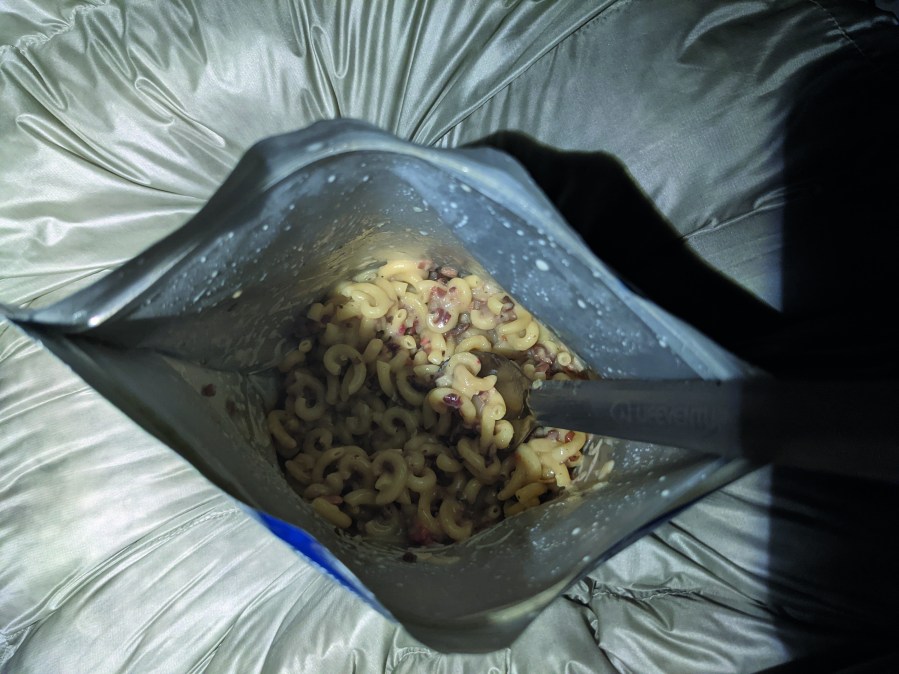
Rehydrating a dehydrated meal pouch.
Credit: Alex Roddie
Non-dehydrated food packs such as Wayfayrer are worth a look. They can be a bit tastier and feel more like real food, but they are heavy as they contain water. If cooking your own food, choose meals with ingredients that carry well: pasta, rice, and ingredients that will keep in a pack such as hard cheese.
Accessories
Carry a firesteel for lighting your stove, even if it has a built-in lighter (these can fail). A firesteel is waterproof and more reliable than matches or a lighter. A foil windshield will help cut draughts and increase fuel efficiency. And for winter camping, a metal stove base will help insulate your stove from the cold ground.
Stove and fuel types for cooking in camp
Gas
Stoves that run on a butane/propane mix are best for backpacking. Look for one that will take a standard screwthread canister. A canister-mount stove mainly for preparing dehydrated meals is tiny, ultralight (from around 70g), and with a small burner. If good food is more of a priority, look for a broader burner and finer simmering control – this will open up more options for cooking.
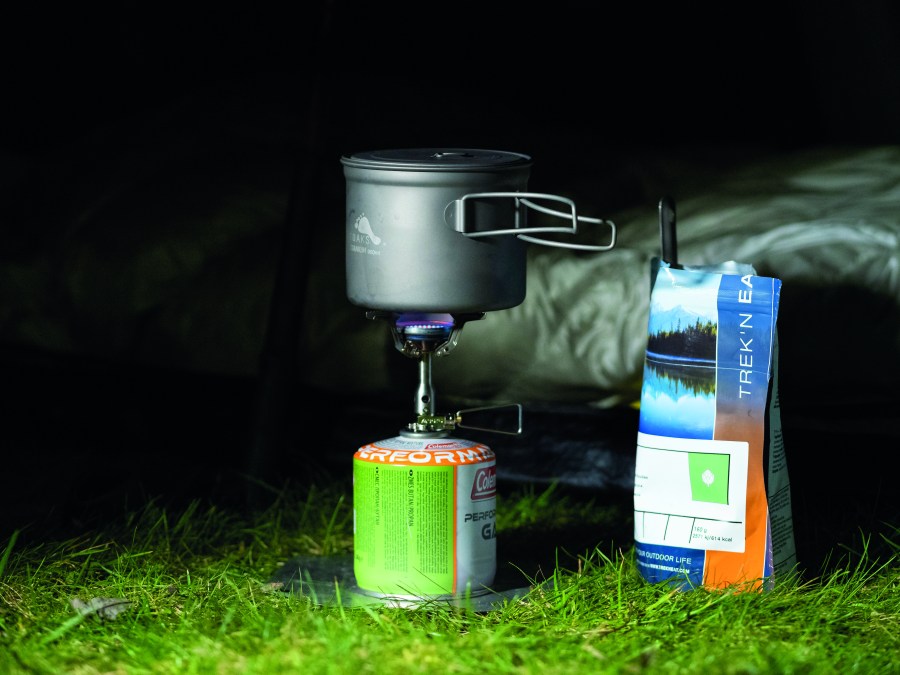
Trek ‘n Eag Wild Mushroom Ragout.
Credit: Alex Roddie
Remote-canister gas stoves have a lower centre of gravity and are better for use with bigger pans or for winter. Look for one where the canister can be inverted to feed liquid gas direct to the burner (vital for low temperatures).
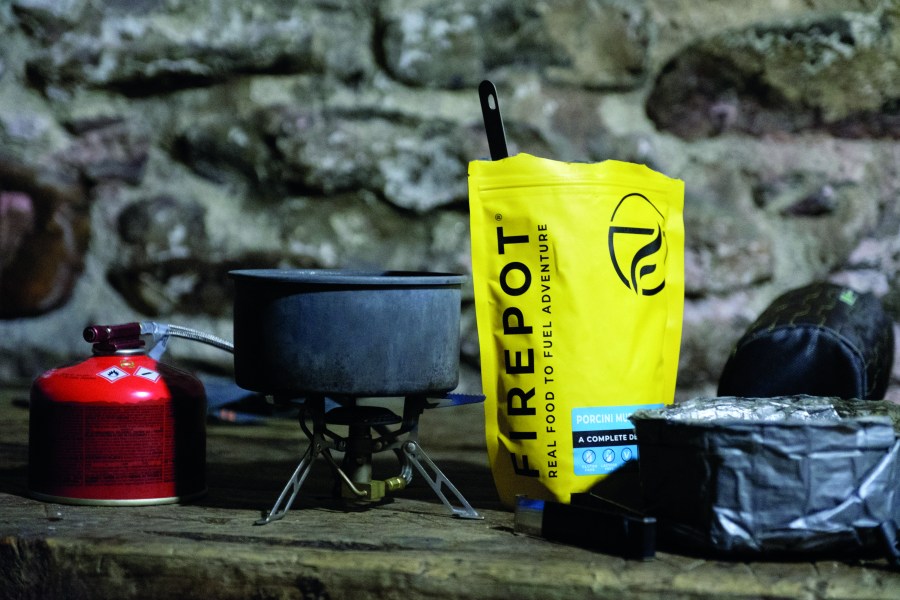
A remote-canister gas stove.
Credit: Alex Roddie
Alcohol
Alcohol or meths stoves are simple and ultralight. The best designs, such as the classic Trail Designs Ti-Tri, use an integrated windshield and pot support. Alcohol stoves are slower to boil water than gas, difficult to simmer, and the fuel is heavier if carrying fuel for more than about a week. However, they are silent, cheap to run, and can be more environmentally friendly.
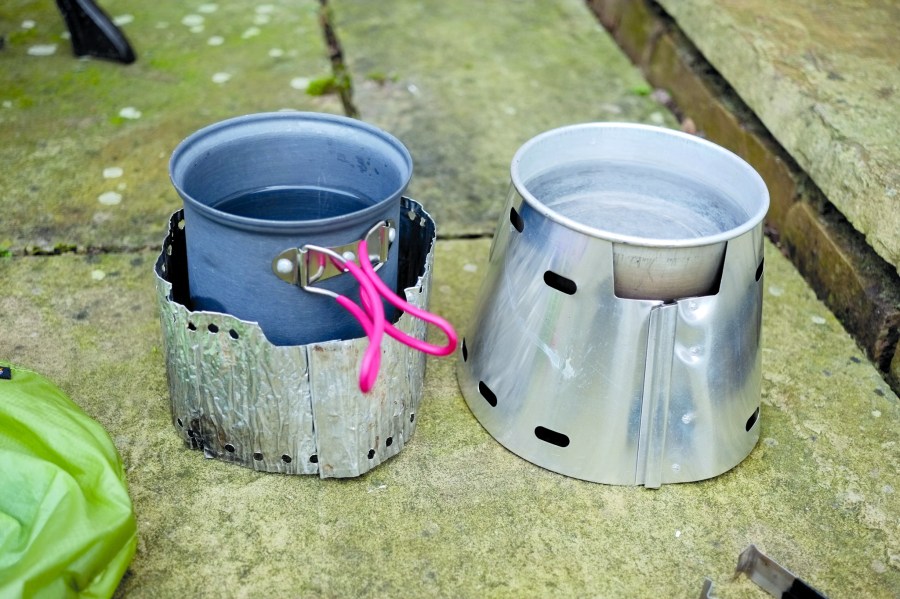
Two types of alcohol stove – Trail Designs Ti-Tri on right.
Credit: Alex Roddie
Liquid and multifuel
These run on fuels such as petrol, diesel, or paraffin. They’re very powerful, efficient for melting snow, and great for expeditions to remote parts of the world where gas might not be available. However, they’re also heavy and require more maintenance.
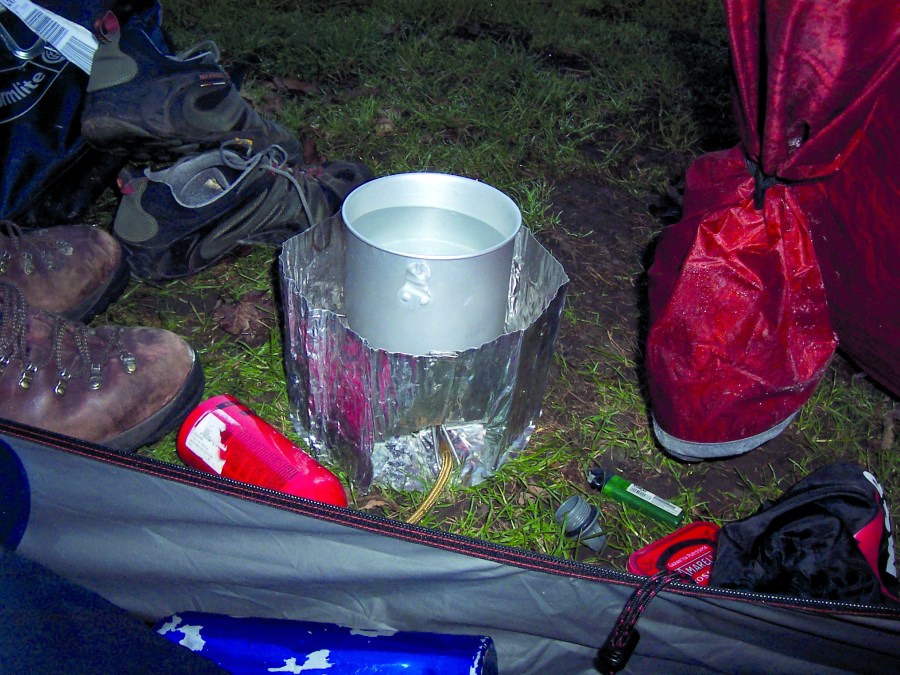
Multifuel stove.
Credit: Alex Roddie
Cooking in camp: routine and safety
- Some people prefer three hot meals a day while backpacking, while others prefer to eat snacks for breakfast and while hiking, then a hot meal before bed.
- Pack sachets of instant coffee, tea, hot chocolate, and/or soup. These are lightweight but can make a big difference at the end of a hard day.
- Cooking in your porch is one of those things that people tell you to never do, but everyone does it. If your tent has a big enough porch to let you cook without the stove (or pan) getting anywhere near the flysheet walls, if you can be sure of getting adequate ventilation, and if the ground is flat enough to make a stable base for your setup, then go for it. But be cautious! A stove failure in your tent porch could be catastrophic.
- If cooking in your porch, try to use your rucksack as a windshield to reduce draughts.
- In cold weather, use your sleeping bag to insulate a dehydrated meal pouch after you have poured in boiling water. Make sure the opening is well sealed first.
- In dry environments where wildfire is a risk, it’s best not to use alcohol stoves. Although they are very safe when used with skill and care, accidents can happen.

